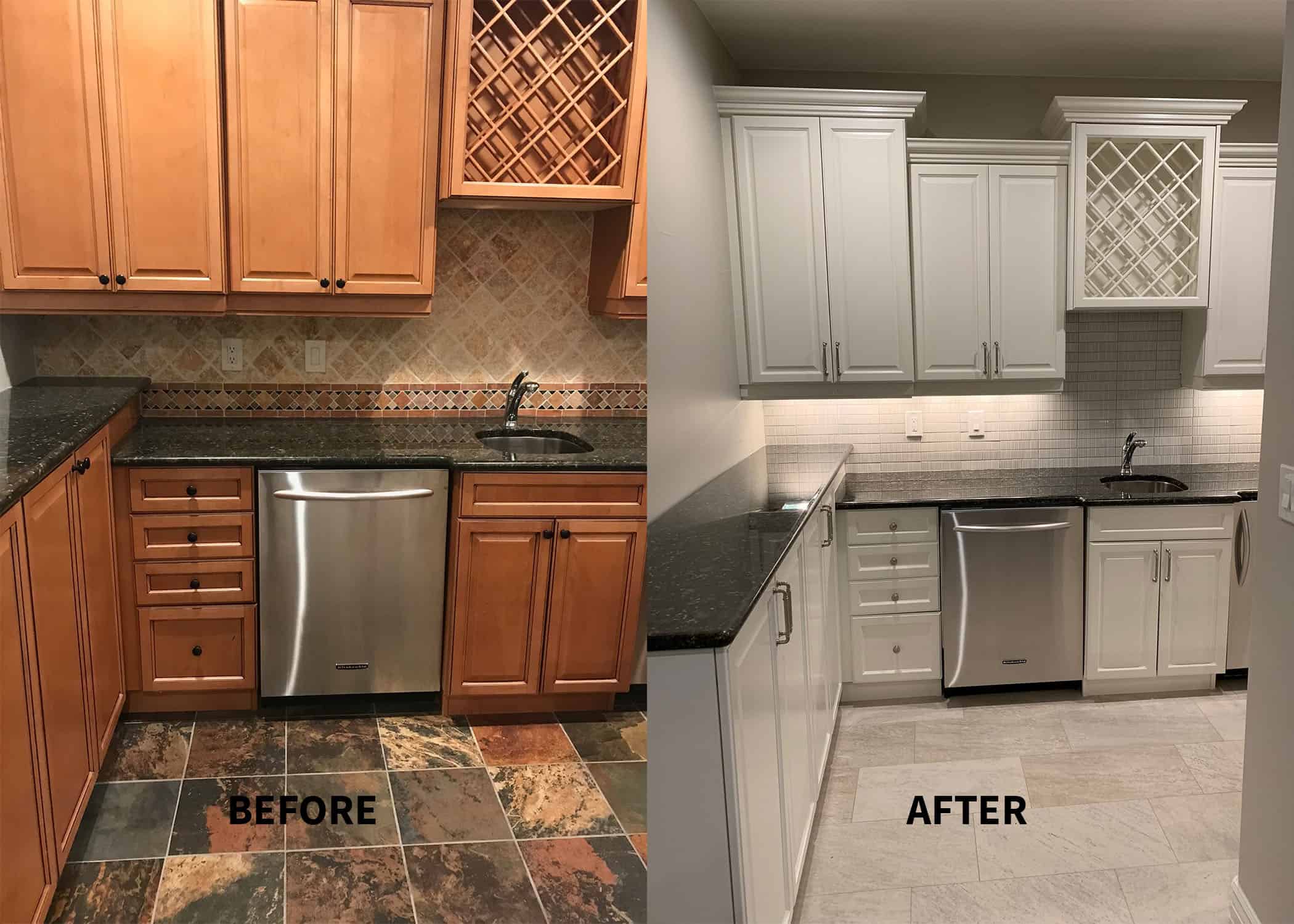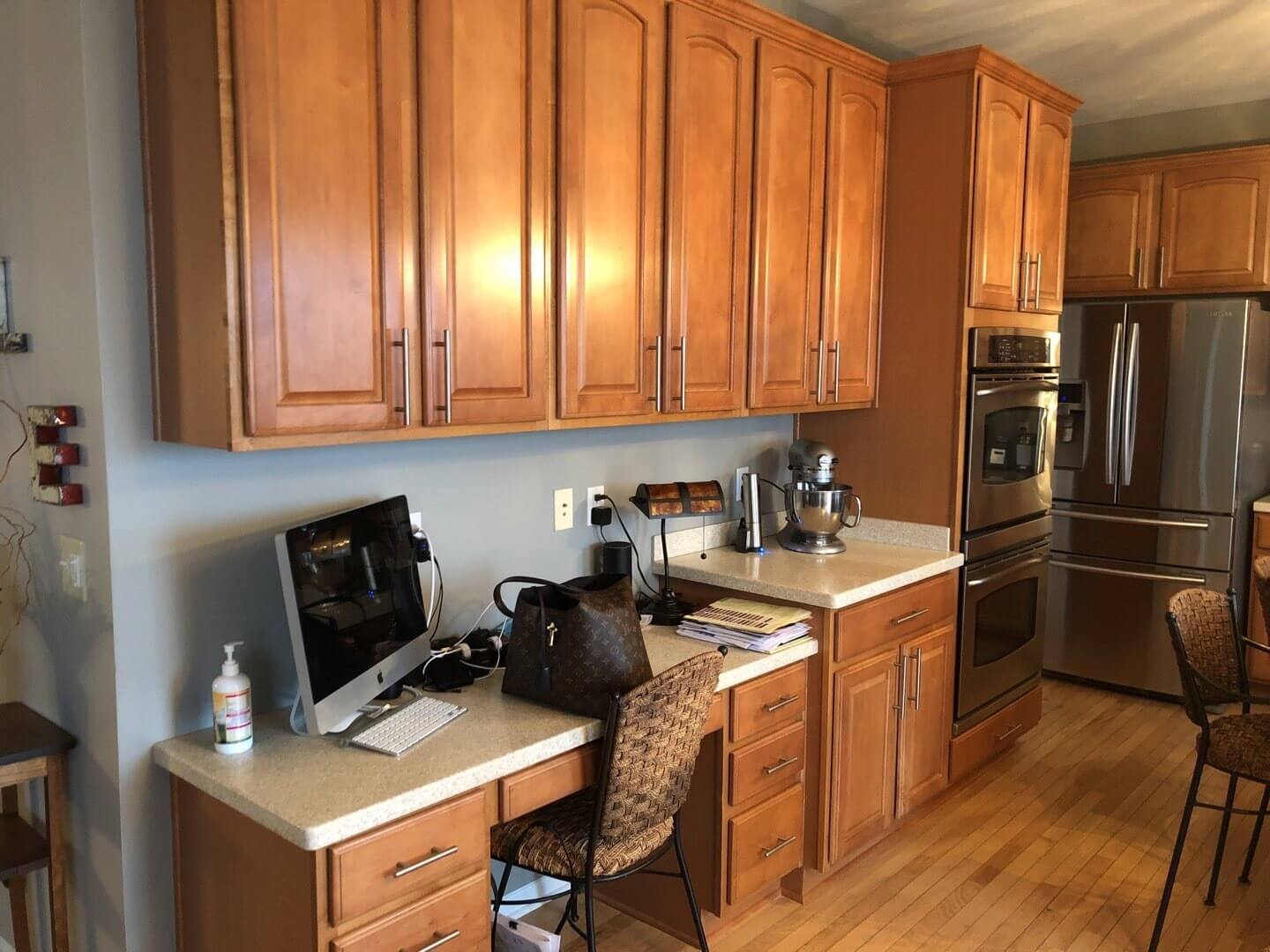Calculating Paint Needed

Accurately estimating the amount of paint required for your kitchen cabinets is crucial to avoid both shortages and unnecessary waste. This involves understanding various calculation methods, considering influencing factors, and selecting the appropriate paint type. Careful planning will ensure a smooth and efficient painting process.
Surface Area Calculation Methods
Calculating the total paintable surface area of your kitchen cabinets is the foundation of accurate paint estimation. This involves measuring each cabinet door, drawer front, and side panel individually, then summing the areas. For complex shapes, breaking them down into simpler geometric figures (rectangles, triangles) simplifies the calculation. Remember to deduct the areas of any hardware that will be removed before painting. A common formula for rectangular surfaces is length multiplied by width (L x W). For more intricate cabinet designs, using a digital measuring tool and software that can calculate irregular areas can improve accuracy.
Accuracy of Calculation Methods and Potential Errors
While precise measurements are essential, various factors can introduce error into paint quantity calculations. Simple area calculations, while straightforward, might underestimate the actual paint needed due to oversimplification of complex shapes or the omission of small areas. Using a professional paint calculator, often available online, can provide a more refined estimate by factoring in more variables. However, even these tools rely on inputted data, and inaccurate measurements will lead to inaccurate results. Overestimating paint consumption is generally preferable to underestimating, as running out of paint mid-project causes significant disruption.
Factors Influencing Paint Quantity
Several factors beyond simple surface area significantly impact the amount of paint needed. The type of cabinet material (solid wood, MDF, particleboard) affects paint absorption; porous materials like wood generally require more paint than denser materials like MDF. The paint type itself is another crucial factor. Oil-based paints typically offer better coverage but require longer drying times, while latex paints dry faster but might need more coats for optimal opacity. The desired finish (gloss, semi-gloss, matte) also influences coverage; glossier finishes tend to reflect more light, potentially requiring less paint per coat. Finally, the condition of the existing finish impacts paint consumption; damaged or poorly prepared surfaces will absorb more paint.
Paint Type Comparison
The following table compares different paint types, highlighting their coverage rates, drying times, and costs. These values are approximate and can vary depending on the specific brand and application method. Always refer to the manufacturer’s instructions for the most accurate information.
| Paint Type | Coverage per Gallon (sq ft) | Drying Time (per coat) | Cost per Gallon (USD) |
|---|---|---|---|
| Oil-Based Enamel | 400-500 | 24 hours | 35-50 |
| Latex Enamel | 350-400 | 2-4 hours | 30-45 |
| Acrylic Latex | 300-350 | 1-2 hours | 25-40 |
| Milk Paint | 250-300 | 2-4 hours | 20-35 |
Practical Considerations and Tips for Painting Kitchen Cabinets: How Much Paint Needed For Kitchen Cabinets

Successfully painting kitchen cabinets requires careful preparation and execution. Overlooking these crucial steps can lead to an unprofessional finish and necessitate costly rework. This section details the practical considerations and techniques for achieving a durable and aesthetically pleasing result.
Cabinet Preparation
Thorough preparation is paramount for a high-quality paint job. This involves a multi-step process ensuring the cabinets are clean, smooth, and properly primed to receive the paint. Neglecting any of these steps can significantly impact the final outcome.
- Cleaning: Begin by thoroughly cleaning the cabinet surfaces to remove grease, grime, and any existing coatings. A degreasing agent followed by a thorough rinsing with clean water is recommended. Allow the cabinets to dry completely before proceeding.
- Sanding: Once dry, lightly sand the cabinet surfaces with fine-grit sandpaper (180-220 grit). This step helps to create a smooth surface and improves paint adhesion. Focus on smoothing any imperfections or rough areas. Wipe away any sanding dust with a tack cloth.
- Priming: Applying a high-quality primer is crucial. Primer seals the wood, preventing the absorption of paint and promoting a uniform finish. Choose a primer specifically designed for cabinets and allow it to dry completely according to the manufacturer’s instructions. Multiple thin coats are generally better than one thick coat.
Tool Selection and Techniques
The tools and techniques employed directly influence the final finish. Using the right tools and applying paint correctly will significantly improve the quality and longevity of the paint job.
- Use high-quality brushes and rollers designed for smooth finishes. Natural bristle brushes are often preferred for their ability to hold more paint and provide a smoother application. Foam rollers can also be effective for a smoother finish.
- Employ a consistent painting technique, applying thin, even coats to avoid drips and runs. Allow each coat to dry completely before applying the next.
- Consider using painter’s tape to mask off areas you don’t want painted. This helps to achieve clean lines and prevents accidental paint spills.
- For hard-to-reach areas, consider using smaller brushes or a spray gun for a more efficient application.
Minimizing Waste and Maximizing Efficiency
Careful planning and efficient techniques can significantly reduce paint waste and time spent on the project. This includes accurate measurements, proper paint mixing, and effective application techniques.
How much paint needed for kitchen cabinets – For example, accurately calculating the paint needed (as previously discussed) prevents purchasing excessive amounts. Using a paint tray liner minimizes waste during roller application. Properly cleaning brushes and rollers after each use extends their lifespan and reduces material costs.
Essential Tools and Materials
A well-organized list of necessary tools and materials ensures a smooth and efficient painting process.
- Degreaser
- Fine-grit sandpaper (180-220 grit)
- Tack cloth
- Primer (cabinet-grade)
- Paint (cabinet-grade)
- Paint brushes (various sizes)
- Paint rollers and tray
- Painter’s tape
- Drop cloths
- Safety glasses and respirator mask
Applying Paint to Cabinets
Applying paint correctly is crucial for achieving a professional, smooth finish. Follow these steps for optimal results.
- Preparation: Ensure the cabinets are clean, sanded, primed, and completely dry.
- First Coat: Apply a thin, even coat of paint, working in the direction of the wood grain. Avoid overloading the brush or roller.
- Drying Time: Allow the first coat to dry completely according to the manufacturer’s instructions.
- Second Coat (and subsequent coats): Apply additional coats as needed, allowing each coat to dry completely before applying the next. Multiple thin coats generally yield a better finish than one thick coat.
- Cleanup: Clean brushes and rollers immediately after use with appropriate solvents.
Cost Estimation and Budget Planning

Accurately estimating the cost of painting your kitchen cabinets is crucial for effective budget planning. This involves considering not only the cost of paint but also the necessary tools, and potentially, labor costs. A well-defined budget prevents unexpected expenses and ensures a smooth project execution.
Estimating Total Project Costs
The total cost comprises several key components. Paint costs depend on the type and quality of paint chosen, the number of coats required, and the size of your cabinets. High-quality paints, while more expensive upfront, often provide better coverage and durability, potentially reducing the need for repainting in the future. Tools, including brushes, rollers, sandpaper, drop cloths, and potentially a sprayer, represent another significant expense. Finally, labor costs will vary depending on whether you choose to undertake the project yourself (DIY) or hire a professional painter. Professional painters charge by the hour or per cabinet, and their rates can fluctuate based on location and experience. A thorough assessment of these factors provides a realistic cost projection. For example, a small kitchen might require $100-$200 in paint and supplies, while a large kitchen could necessitate $500-$1000 or more. Labor costs could range from $500-$2000, or even more for complex projects, depending on the professional’s rate and the project scope.
DIY versus Professional Painting Costs
The cost difference between DIY and professional painting is substantial. DIY painting requires an upfront investment in tools, but you save on labor costs. However, it demands time, skill, and effort. Mistakes can be costly, requiring additional materials and potentially extending the project timeline. Professional painters possess the expertise and experience to complete the job efficiently and to a high standard, minimizing the risk of errors. Their higher hourly rate, however, adds significantly to the overall expense. Choosing between DIY and professional painting depends on your budget, available time, skill level, and desired outcome.
Cost-Saving Strategies
Several strategies can help reduce costs without compromising quality. Purchasing paint during sales or using coupons can significantly lower material expenses. Renting rather than buying specialized tools, such as sprayers, is a cost-effective alternative. Careful preparation, such as thorough cleaning and sanding, minimizes the need for multiple coats of paint, reducing paint consumption. Prioritizing the painting of high-visibility areas first, leaving less visible areas for later completion, can help manage your budget effectively, potentially stopping the project early if costs become a concern. Choosing a simpler paint finish, such as a semi-gloss rather than a high-gloss, can also save money without drastically affecting the final look.
Detailed Budget Breakdown, How much paint needed for kitchen cabinets
A detailed budget helps track expenses and avoid overspending. The following table provides a sample breakdown:
| Item | Quantity | Unit Cost | Total Cost |
|---|---|---|---|
| Paint (Primer) | 1 gallon | $30 | $30 |
| Paint (Topcoat) | 2 gallons | $40 | $80 |
| Sandpaper | 2 sheets | $5 | $10 |
| Brushes | 2 | $15 | $30 |
| Roller | 1 | $10 | $10 |
| Drop cloths | 2 | $10 | $20 |
| Painter’s tape | 1 roll | $8 | $8 |
| Cleaning supplies | $15 | $15 | |
| Labor (if hiring a professional) | 8 hours | $50/hour | $400 |
| Total Estimated Cost | $603 |
Note: This is a sample budget and costs may vary depending on your specific needs and location. Remember to adjust quantities and unit costs to reflect your actual requirements.
